When we talk about appaloosa colouring genetics, we are really talking about all spotted breeds around the world. Whilst the appaloosa is probably the best known spotted breed, The genetic mutation that is responsible has been around for many thousands of years and is well documented.
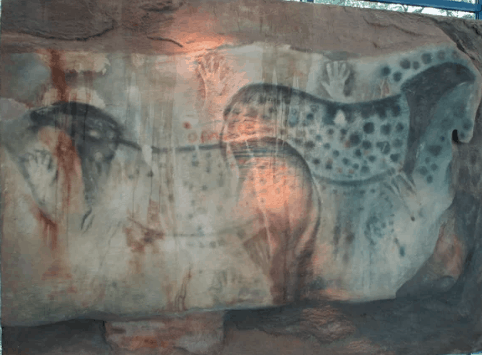
Perhaps the earliest examples would be of prehistoric cave paintings found in France. The approximately 25,000-year-old paintings “The Dappled Horses of Pech-Merle” depict spotted horses on the walls of a cave in France appear to be remarkably similar to a pattern known as “leopard” in modern horses such as Appaloosas.
DNA analysis of fossils from this period have also found the mutated gene responsible to be present.
The gene is known to be present in many breeds… both man made breeds i.e. the Appaloosa, The Knabstrupper, The norriker.. and ‘breeds’ that have been created by the fact that they are very isolated from other breed populations in areas such as Mongolia and Kyrgyzstan.
The following article is simply a collection of ideas and experiences that we personally have collected through experience at Australian Coloured Performance Horses focussing specifically on breeding spotted style Appaloosas and Sportaloosas.
It’s in the Genes!
In order for there to be spotted characteristics, The LP gene must be present. (LP stands for Leopard Complex)
A horse who has one copy of the gene (Heterozygous) is said to be LP lp.
A horse with two copies(Homozygous) is LP LP.
A horse with no copies (lp negative) is lp lp.
HOWEVER, LP ON ITS OWN DOES NOT PRODUCE THE WHITE PATTERNING. THIS IS PRODUCED BY HOW LP REACTS WITH A NUMBER OF PATTERN PRODUCING MODIFIER GENES.
The presence (or absence) of other genetic factors will determine how much colouring is displayed. This can vary from simple appaloosa roaning (a TOTALLY different gene than the RN roan gene), the whole way through to a fully spotted leopard pattern.
So far only one of these has been isolated and identified and is referred to as PATTERN 1 gene. (Patn1)
The Pattern 1 Gene.
This PATN 1 gene is responsible for interacting with the LP gene and for the leopard coat pattern that covers 60 % to 100% of the entire horse, giving rise to a leopard or near leopard foal
A horse that is homozygous for LP (so LP/LP) and carries at least one copy of PATN 1 will be pure white and is referred to as a Few Spot .
These are really the most valuable of all breeding stock, since they will always pass on colour of some sort.
Example 1.
Result of Breeding a Fewspot Mare (LP/LP PATN1/PATN1) + Non appaloosa Stallion (lp/lp patn1/patn1) = Coloured foal (LP/lp PATN1/patn1)
Few Spot Mare
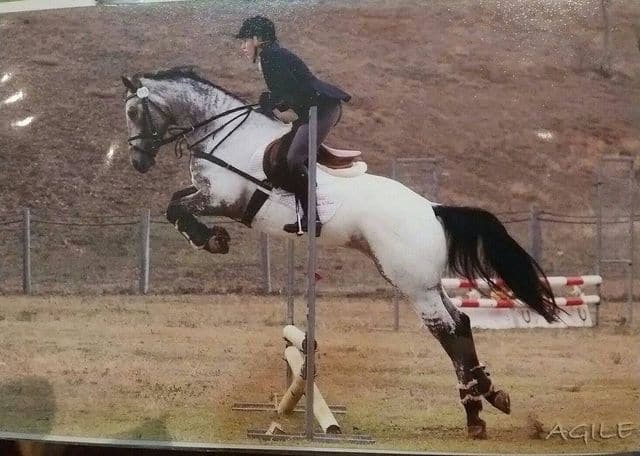
Non Appaloosa Stallion.
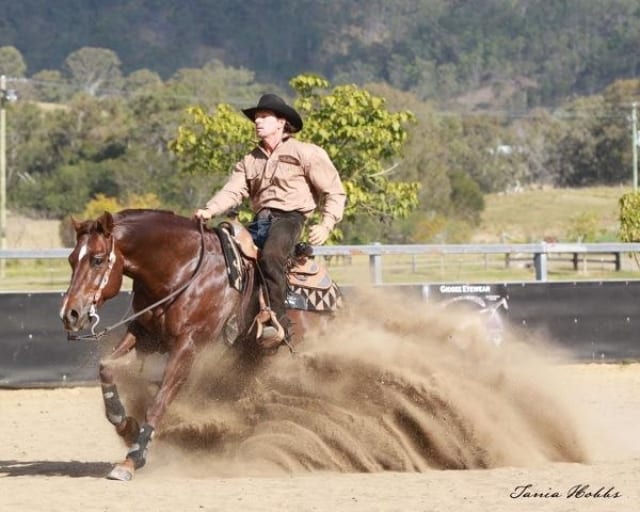
Result Coloured Foal.
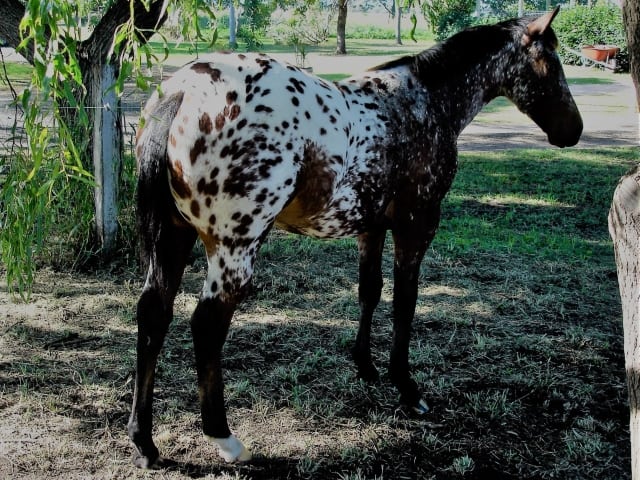
Example 2
The Result of Breeding another Few Spot Mare (LP/LP PATN1/patn1) with a Non Appaloosa Sire (lp/lp patn1/patn1) = The Result a Coloured foal (LP/lp PATN1/patn1)
Few Spot Mare Lily Fewsion
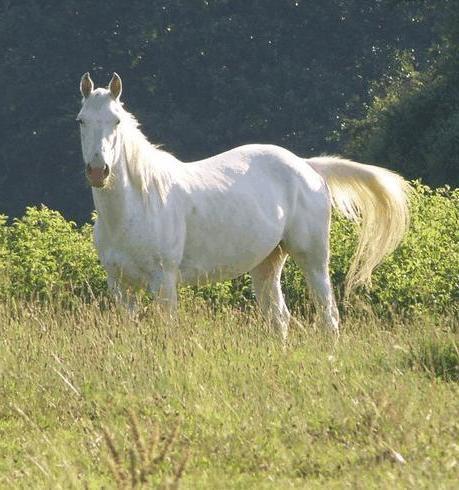
Non Appaloosa Sire – Concenting.
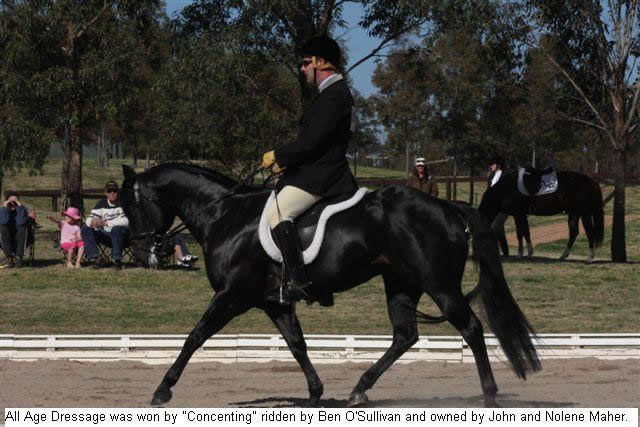
Result Appaloosa Horse
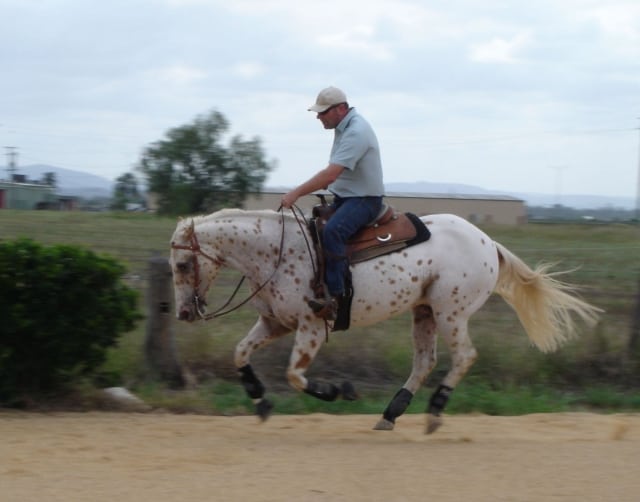
Blankets
The next area we will examine is Blankets. It is known that a horse must have at least one copy of LP and ZERO copies of PATN 1 to produce a blanket. Any information you may find online at the moment referring to PATN 2 being the blanket gene is totally incorrect and to be ignored. (if only it was that simple!).. It is possible that more DNA markers will be discovered in the future, but for the moment PATN 2 has not been isolated .
Homozygous horses, which do not contain PATN 1 are referred to as Snow-caps.
They will usually have white blankets on their quarters that contain minimal to no spots.
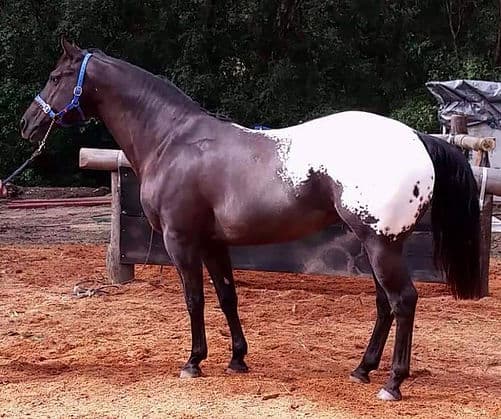
There are huge varieties in the size and shape of snow-cap blankets and many people are surprised by how much appyness can be thrown by a parent displaying minimal. Lil Miss Henry is a great example of this .
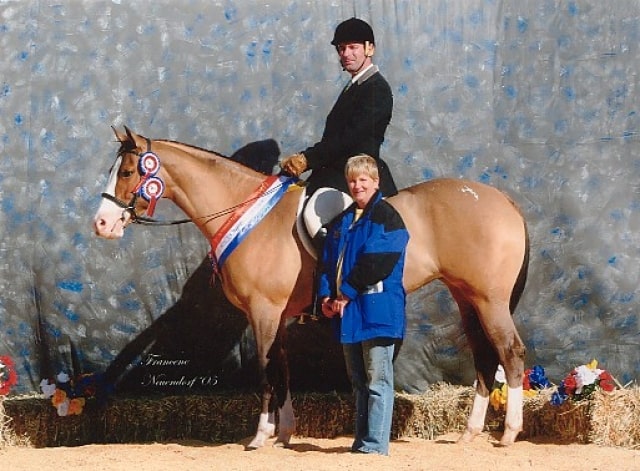
The little white patch on her quarters is her main appaloosa colouring. However, when crossed with a non-appaloosa we know that she MUST drop a LP gene (since she is a snow-cap and has two of them). The following foals are all out of Lil Miss Henry from non-appaloosa carrying sires.
Foal 1 – Out of Lil Miss Henry x Leeuwin
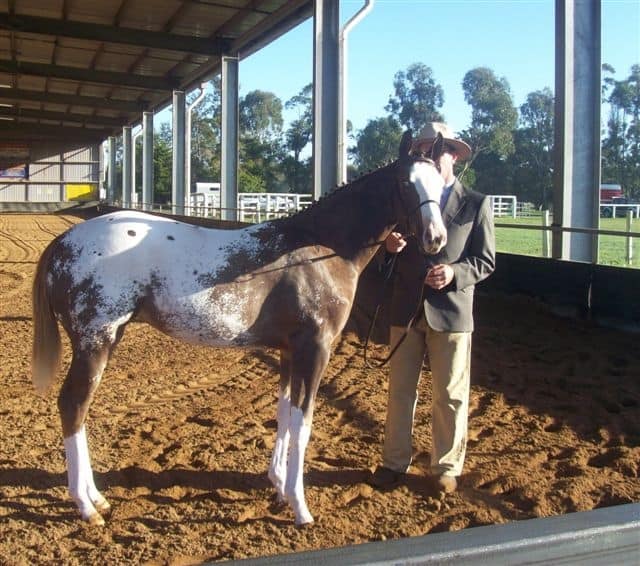
Foal 2 – Bazinga Out of Lil Miss Henry x Days of Gold
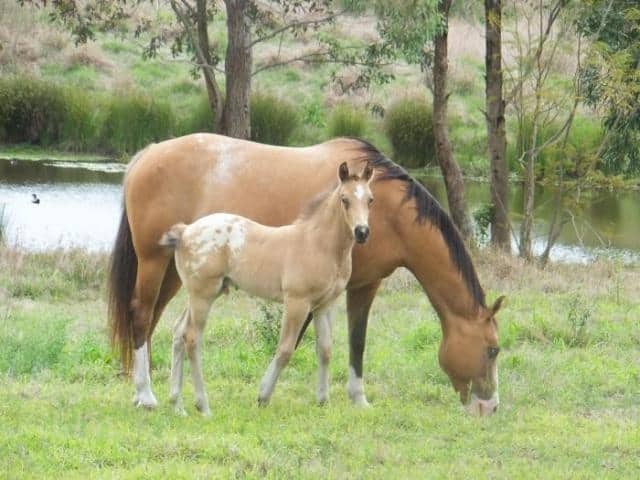
Foal 3 – Out of Lil Miss Henry -x Aachimedes
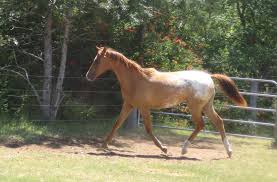
Foal 4 – Out of Lil Miss Henry -x Morroco
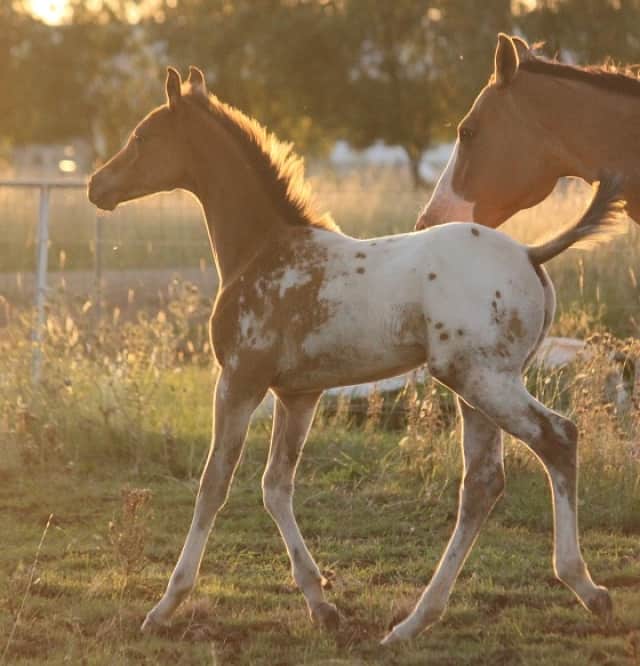
Heterozygous Appaloosas
However, when heterozygous appaloosas are being used it becomes more of a gamble, and the genetic possibilities are less easy to predict. Once the gene is bred out, it is gone unless it is reintroduced later.
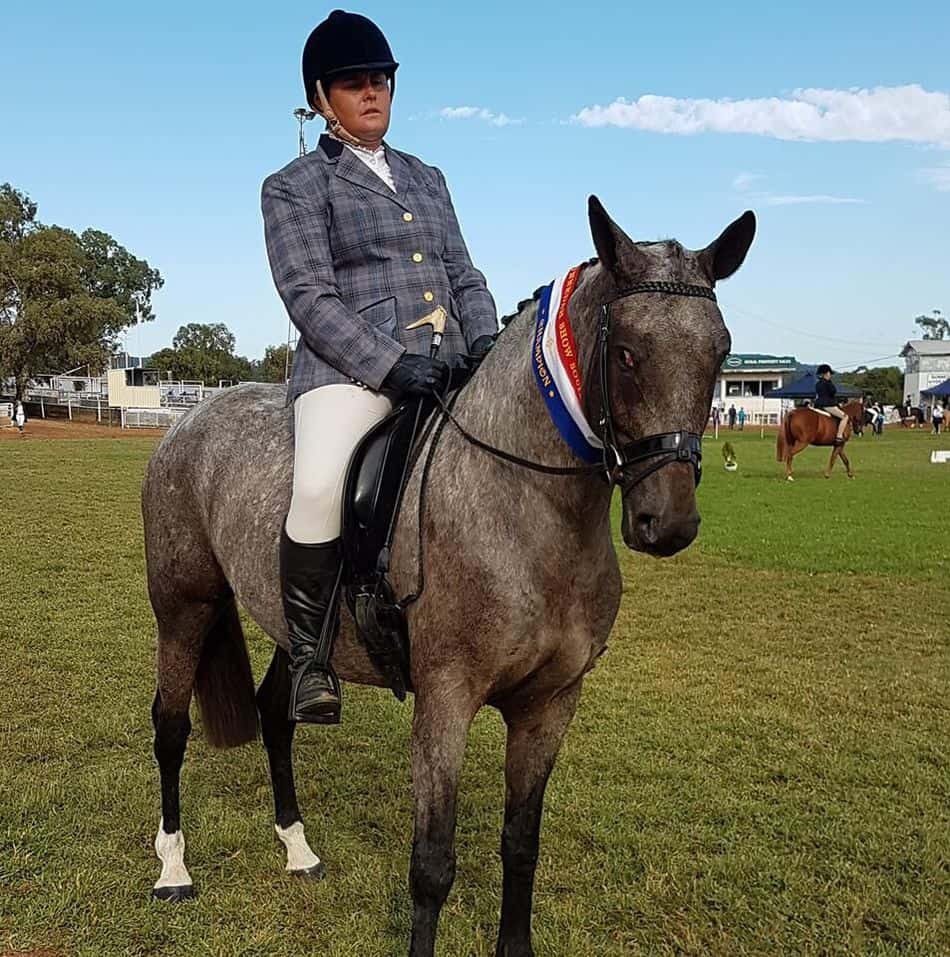
Not all horses are born displaying the ‘final’ coat pattern. It can develop over time. a process known as roaning out. Take for example this Knabstrupper of ours Hilda seen above, Click Here to see photos showing the first 6 years of her life so far.>>. she will eventually be leopard spotted.
Recommendations.
It is also very important to know there is a direct link between appaloosa coat patterns and Chronic Stationary Night Blindness. Only homozygous horses are affected but every LP horse is a carrier. It is a condition that the animal is born with, and does not ever degenerate or ‘get worse’. If you do breed, or are considering breeding any spotted breed, Please read this excellent article from The Appaloosa Project.
We also recommend NEVER using grey in any coloured breeding program, since it will eventually cause the contrasting colours to grey out.
Breeding for spots has certainly been made a lot easier by the development of DNA testing, however, I don’t think LP or PATN 1 testing is available from the Irish lab, so the next nearest lab to Ireland that offers it is in UK . https://www.animalgenetics.eu/Home.html
Check out the Genetics of Breeding Colour Part 1 Horse Patterns here>>
This article was originally published in the March 2019 Issue of Irish Sport Magazine. Bernard O’Sullivan is a BHS Instructor and an Irish International Reining Athlete. Bernard and His Partner Julian Kingsford Breed and Train, Reining and Sport Horses in Australia. You can contact Bernard through his website below. All Pictures in this article were provided by Bernard O’Sullivan.
www.australiancolouredperformancehorses.com.au
